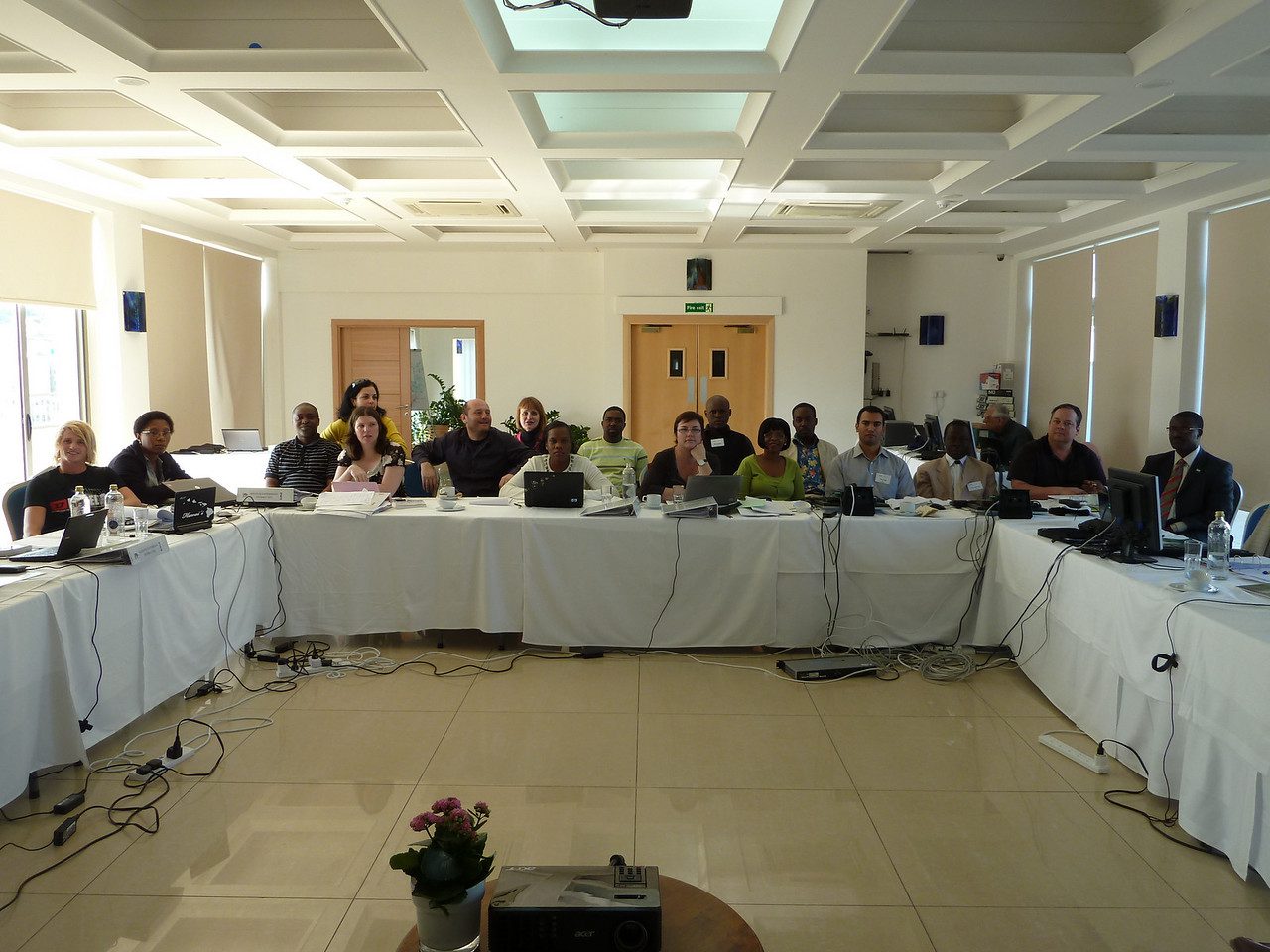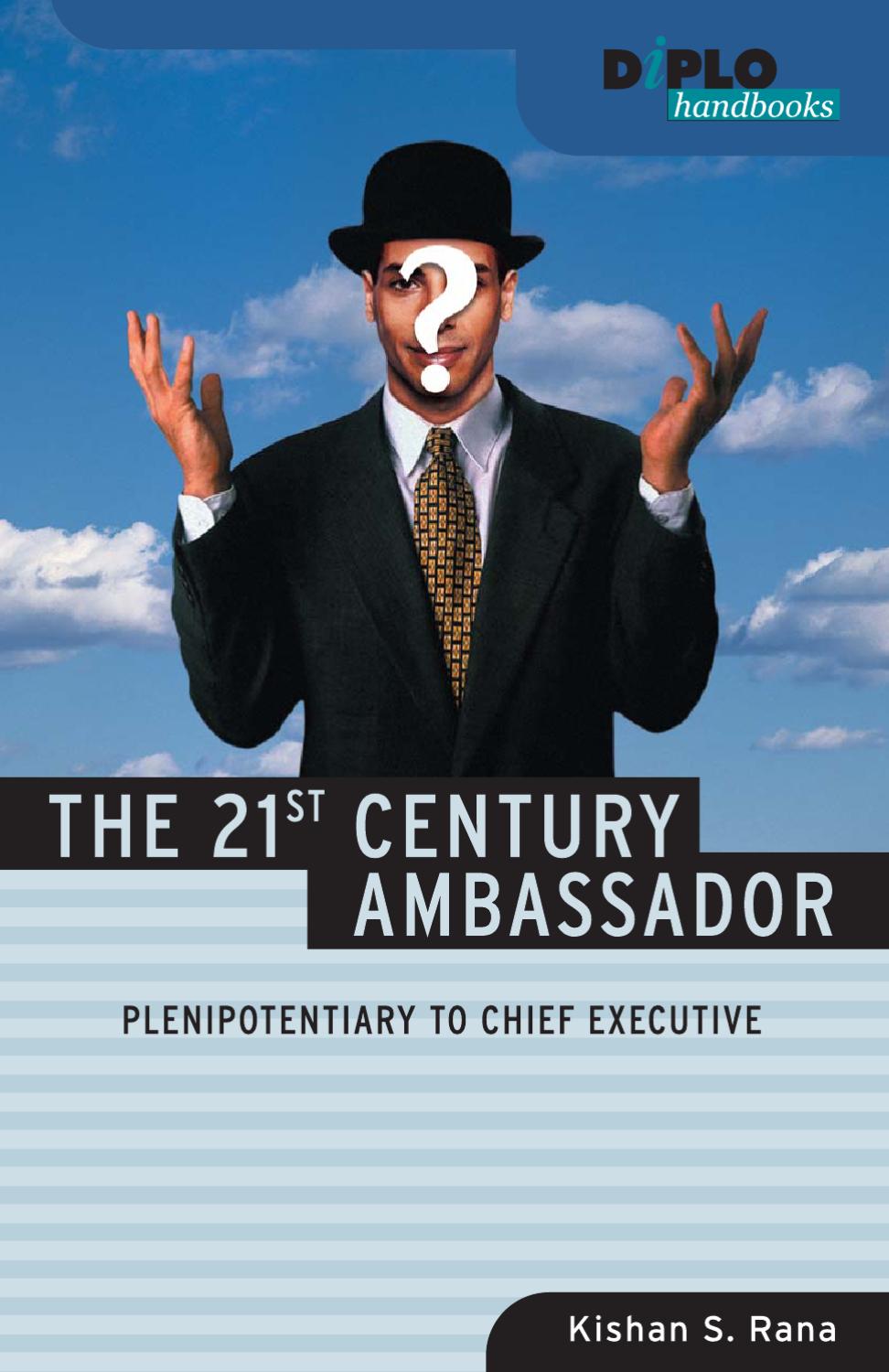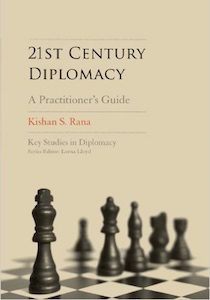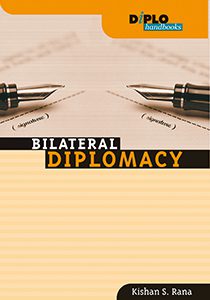A superficial debate often places speech and action in opposition. This is, of course, an artificial debate and one which tends to lead to simplistic caricatures. The great spirits who enlightened humanity exercised an action, deep and long-lasting, through the power of their Verb. In contrast, the great men of action were, more often than not, transported by the power of their thoughts and speech. All thoughts are actions and there is no action without thought.
The diplomat – now more than ever – is a man of action: he seeks, establishes and fixes rules which will enable men to live better together in the future once barbarism has been overcome; barbarism – the negation both of action and of thought. How does he act? Through the Verb, through speech.
Contemporary linguistics, in its own manner and without planning to enter the debate, took a stand. In 1962, John Austin published in Oxford How To Do Things With Words translated by G. Lan and published in France in 1970 under the title Quand dire c’est faire. In 1969, John Searle published Speech Acts, translated and published in France under the title Les actes du langage. The titles of these two publications, in themselves, highlight this fact: word and action are one.
These two researchers laid the basis for what has since been called “semantic pragmatics” or “linguistic pragmatics”. This discipline has developed to the extent that it is beginning to be independent of linguistics.
The aim of this presentation is to apply some of the data in this field of research to diplomatic exchange. It will be based on three points:
- speech as an intentional act;
- the effects of the act of speech;
- the role of the unsaid in the act of speech.
One amongst various researchers, a Frenchman, Oswald Ducrot, in his book Le Dire et le Dit, asks a few simple and enlightening questions which all diplomats would be justified in asking: “Why is it possible to use words to exert influence, why are certain words, in certain circumstances, so effective?” and again “Why did the speaker say what he said?”
We may observe that from a linguistic viewpoint, such analytical perspectives on speech (whether diplomatic or otherwise) give prominence to the distinction, already made by scholasticism, between the Dictus, what is said, and the Dictum, the intention behind what is said.
SPEECH AS AN ACT
We will deliberately set aside anything linked to the subconscious or unconscious expression as this does not concern the field of the present study. All speech constitutes a deliberate act. Even when not followed by an act, a word, just by the very fact of having been spoken, has acted. Promises (whether electoral or not), commitments, affirmations, information, petitio principii, lies, threats, orders, professions of friendship or declarations of love – there exists no speech which does not leave an immediate trace, without prejudice to its possible consequences.
Linguists propose four basic modalities for the act of speech:
1) The assertive modality: an assertion is a proposal which is put forward as true, conforming to facts. An assertion affirms truth. It does not prove it.
The diplomatic document offers frequent examples of this modality as it is based on what is real, on facts. These facts actually shape the document (when it is possible to have a clear idea): the way in which the document takes these facts into consideration, how it presents them and qualifies them. The instruments for linguistic analysis should enable us to better place the gap between each text, to highlight its subjectivity as, in many cases, this is skilfully calculated and party to the speaker’s intention.
2) The interrogative modality: the original idea is based on the speaker’s intention to obtain a reply from the recipient (except, in rhetoric, in the case of the oratorical question, the art of forcefully revealing an idea, a conclusion, a fact). This primary intention often hides other inexplicit intentions.
3) The exclamatory modality: the emotion which it expresses and which it betrays is quite incompatible with the impassiveness which should be the rule in diplomacy. On the contrary, political discussion, often violent, ironic, cordial, emphatic, etc., contains many examples. It clearly expresses the subjectivity of the speaker and, as such, it somewhat escapes from the criterion of intention – except if the speaker plays on a supposed emotion so as to impress the recipients through his message – this happens frequently in politics. The exclamatory modality belongs to the field of expressive language, “language of life, of feelings” which linguists oppose to that of thought, indicated as representation, assertion being an example.
4) The imperative (or jussive) modality: that which expresses the speaker’s intention to induce the recipient to act in a specific manner, e.g. “Come here.” UN resolutions, ministers’ orders to the chanceries, EU directives, just to take a few random examples, clearly illustrate this point. The imperative modality which characterises the word as an act (in a linguistic reflection) only makes sense, in a diplomatic or international context, when in accordance to the speaker’s real authority over the recipient, which takes us beyond the linguistic field towards sociological, legal and political spheres.
THE EFFECTS OF THE ACT OF SPEECH
The above-mentioned quotation from Ducrot fixes three chronological divisions of the act of speech. The central part (during) is called the locutary. It is simply the fact of saying something, of pronouncing a statement in a coherent manner using the common code.
The speaker’s intention (before) and the effects of his words (after) are more subtle if we differentiate between what is apparent, immediate and what is effective but implicit, replying to the speaker’s deep and true intentions.
Ducrot writes, in the same book (Le Dire et le Dit): “In my opinion, the fact of saying that a statement possesses, according to the terms of the philosophy of language, an illocutary strength, means to say that a `legal’ power is being attributed to the statement – inducing an action (in the case of a promise or an order), inducing speech (in the case of an interrogation), rendering an illegal action lawful (in the case of a permit), etc.” Elsewhere, the author of this quotation adds to this “legal” change in status: it is immediate. It must be said that the interlocutors are fully aware of this change in their relations and that it concerns them both even if the inducement to act is not followed by an effect (disobedience, unkept promises, no reply, revocation of an authorisation, etc…these are strong actions, albeit negative).
The quotation marks used by Ducrot for the word “legal” highlight the intended metaphor. It, however, lands us fair and square in the field of international law and, in particular, in one of its issues, which is to know to what extent a text creates an obligation (for both the speaker and the recipient) to create a new legal (without quotation marks) situation.
In taking up the modalities described above, the assertion, the interrogation, and the order instantly place communication on a level from which the interlocutors will escape with difficulty. These are illocutary acts.
Amongst the illocutary acts, we should highlight the argumentative approach which installs a particular type of communication constraining each interlocutor in turn to defensive phases (of refutation) and offensive phases (counter-arguments). It is not a law, strictly speaking, as it exists in and by texts, but its elaboration and its implementation. Negotiations, and consequently, the argumentative approach are at the core of diplomatic life.
The perlocutary act is more difficult to detect. R. Escarpit, in L’Ecrit et la communication, characterises it thus: “the locutor’s more or less secret intention – and more or less conscious intention – is accomplished by the very fact of addressing a word to the listener.”
It is placed, therefore, prior to the word (before) and composes the speaker’s real intention, his strategy – the rest simply relate to tactics and implementation. It is within these characterisations that one can find that which current or familiar language calls a metaphor, “the wooden language”, and what the language of psychologists calls “manipulation”. An assessment must still be undertaken of the distance between the perlocutary intention (before) and its real effects (after) which evidently do not form part of it but which measure its effectiveness.
These three concepts (locutary – illocutary – perlocutary) do not cover the entire field of semantic pragmatics. We still have to deal with the performative act in which what is said tallies with what is done. “The locutor carries out the action which he said he would carry out.”
Here is a simple example: if someone tells a listener “I order you to be quiet” what he says (I order you) is exactly what he does (to give an order). It is a performative act, however this does not stop us from analysing this statement as an illocutary and perlocutary act.
THE ROLE OF THE UNSAID IN THE ACT OF SPEECH: SENSE AND MEANING
Another approach to the act of speech consists in questioning not only what is said, the manner in which it is said, but also what is left unsaid, and which is sometimes as effective as what is said.
A primary element, indispensable in rendering effective the act of speech in a communication, is the notion of presupposition. Presuppositions are all those facts, notions, and realities which the speaker and the recipient of the message have in common and which do not need to be repeated or recalled for the communication to take place.
Innuendo, on the contrary, is the result of an interpretation of what has just been said. We may consider that it is linked to the perlocutary act as it expresses an intention which is not clearly shown. One may understand that this necessary interpretation of innuendo will always be more or less uncertain. It forms part of the problems or subjectivity of all communications. As it is not based on the analysis of any observable objective feature of what has just been said, it must always be substantiated. It is not abusive to say that the decoding of diplomatic wording requires, more than in other cases, an interpretation of innuendos. The danger appears in the process of intention as it attributes intentions to the interlocutor which he did not entertain.
A simple example will help clarify these notions and propose a summary of the aforesaid: person A asks person B “Can you close the window?”
a) At first glance, it is an illocutary act (interrogative modality). B must answer and he could do so by simply saying “yes” or “no”. (I can, or I can not).
b) But this is not at all what is being asked of him. A’s real intention is to make B close the window. Here lies the perlocutary act. It is a question, an order which is disguised, mitigated and misleading.
c) The presuppositions: there is a window in this room; it is open. (If the contrary were true, neither the illocutary act nor the perlocutary act would make any sense). A and B can not ignore it, of course.
d) The innuendos: we may imagine that it is too cold or too hot, that there are draughts which bother A, that there is too much noise and that A is disturbed during his work, etc., etc. It is possible to sustain any such hypothesis only if the scenario of the communication is well known.
The first reading of the message furnished an immediate content, carried by the language and clearly accessible for those who know it well. This is what Ducrot calls the meaning. Beyond this, the recipients must discover the sense of the message. Meaning and sense are used here in a specific, technical manner and not as they exist in current language. The work of interpretation, of decoding a message so as to discover the sense beyond the meaning, must comprise all that was said above about the intention, the modalities, the unsaid, but also the polyphony, the communication scenario, the statement, the connotation, the rhetoric, etc., notions and fields which have not been tackled because of the limited nature of this presentation.
Presupposition and innuendo refer to the notion of the awaiting horizon, which covers the knowledge, culture and opinions even of the recipient, without which the message would remain, for the most part, unintelligible.
Most diplomatic texts lend themselves to such an analysis. They must be read as carefully as they were drawn up.
CONCLUSIONS
Diplomatic communication stands out as there are few other oral or written communications which are so deliberate, masterful and pregnant with reflection and meaning. There are few other messages which are so carefully and prudently drawn up, read, interpreted and analysed than those it provokes.
Perhaps above all else, the words of a diplomat constitute an act. Indeed: his action is his very word.
It is, however, a misleading, coded word which hides thought as much as it reveals it and always requires a second reading. Why? Simple courtesy? Here, courtesy alone may be effective. The function of diplomatic wording is to avoid direct, brutal, primary and unproductive confrontation. A conflict is not solved by another conflict. This, of course, does not impede firmness. Here lies the art of the diplomat.
During a council of ministers on 24 February 1982, F. Mitterand said on the subject of France’s position with regard to the problems in the Middle East : “I recall the importance of coded language in diplomacy, this is why any change in wording, any change in a comma is considered as a fundamental change….It is a delicate matter which demands that one does not speak, that one speaks as little as possible. Our interlocutors must appreciate our policy because of its facts and our acts, and not because of what we say.” This is a paradoxical declaration, which asserts the importance and the effects of the act of speech while concurrently pretending to deny them. Which other (concrete?) action, besides speech, could France have availed itself of with regard to a solution to the difficulties in the Middle East?
Napoleon said to Fontanes, the great master of the university: “There are only two powers in the world: the sword and the spirit. In the long term, the sword is always vanquished by the spirit.” This could be the motto of diplomacy, a space wherein the power of the spirit is shown through the word.
REFERENCES
Austin, J.L. How To Do Things With Words. Oxford, 1962. (French translation: G. Lan. Quand dire c’est faire. Le Seuil, 1970.)
Ducrot, O. Le Dire et le Dit. De Minuit, 1984.
Jaubert, A. La lecture pragmatique. Hachette, 1990.
Recanati, F. Les énoncés performatifs. De Minuit, 1981.
Searle, J. Speech Acts. Cambridge University Press, 1969. (French translation: Les acts du langage. Hermann, 1972.)








